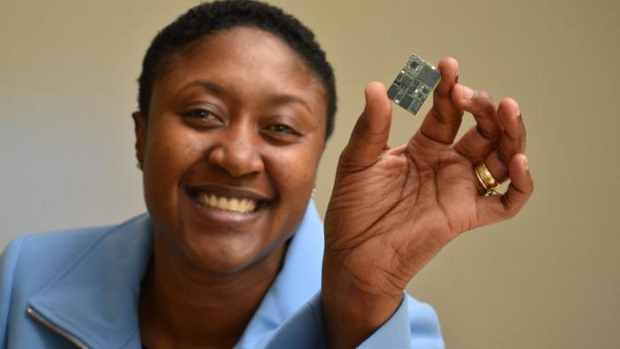Apple’s iPhone has twice been linked to Intel’s mobile future. The chip maker bungled it up once, but is coming on strong the second time. Intel passed on the opportunity to make chips for the first iPhone, and last May discontinued Atom smartphone chips after wasting billions trying to get them in handsets. The chip company has since been building a new mobile identity around its modems and wireless connectivity assets.
Intel’s had success, and some iPhone 7 smartphones are already using the chip maker’s modem. The company is now building faster modems, and carrying out trials for future 5G wireless networks.
The transformation has been quick, and that’s something the chip maker will boast at next week’s Mobile World Congress show in Barcelona. MWC is a “coming out party” for 5G, said Aicha Evans, senior vice president and general manager of the communications and devices group at Intel (pictured), in an interview.
In name, 5G is a successor to 4G, but it is a lot more versatile and significantly faster. Beyond smartphones, it will also go into autonomous cars, drones, smart home devices, industrial equipment and a wide range of internet of things devices.
Intel realised that it had to look beyond smartphones, and expand connectivity for the network of 50 billion devices in the IoT world, Evans said. More than the CPU, the communications technologies were important, and the company had to bulk up its wireless assets.
PCs will also use 5G in gaming, VR and other applications. For example, 5G could be used to connect PCs wirelessly to VR headsets. 5G – which will include a range of wireless technologies – will connect PCs wirelessly to monitors and other external peripherals. In effect, it could help build a “wire-free” PC, an idea Intel has been chasing for years.
5G brings unprecedented long-range communication capabilities and data transfer speeds that could surpass 45Gb/s, Evans said. That is more than double the speed of 20Gb/s speed for 5G set by International Telecommunication Union in 2015.
There will be big changes in the designs of networks, devices and infrastructure, and Intel is preparing for that future through modems, development kits and 5G trials, Evans said.
At MWC, Intel will announce the readiness of its first 5G Modem silicon made using the 14-nanometer process, which will ship for testing in the second half this year. Intel first announced 5G Modem at CES.
Fast track
The path to 5G is through faster 4G models. Intel at the show will also announce the new gigabit-speed XMM7560 4G modem. The modem is a big deal for Intel, which is trying to catch up with its rival Qualcomm, which has a headstart on 4G and 5G modem technologies. Qualcomm last October announced its first gigabit-class modem, the Snapdragon X50, which is scheduled to appear in many mobile devices in the coming quarters.
While smartphones will technically be able to achieve gigabit 4G download speeds, most cellular networks still don’t operate at that speed. An exception is Telstra, which has launched a gigabit LTE network in Australia.
Intel could not say when the gigabit-class 4G modem would be in mobile devices. But the modem is ready, Evans said.
Intel will also show off some uses for 5G in autonomous cars and how it could make driving safe. BMW, together with Intel and Mobileye, is developing an autonomous car that should hit the road in 2021. The 5G car could be hooked into a grid for energy management, or a smart city infrastructure – like a smart streetlight system – for safer driving. A 5G car could draw data from a wider range of sources outside the regular cameras, lidar and radar in a car for better collision avoidance, maps and navigation data.
Many 5G technologies are being developed in partnership with companies like Ericsson, Nokia, and carriers like AT&T, Verizon, China Mobile, Vodafone, DoCoMo and Telefonica. Intel also announced a new initiative with Ericsson and Honeywell called 5GI2 to advance 5G testing and innovations.
Intel also announced a development kit called the 3rd Generation Mobile Trial Platform that enables faster 5G testing. The kit includes a board based on Stratix 10 FPGAs (field-programmable gate arrays), and offers data transfer speeds of up to 10Gb/s.
It supports a wide range of bands including 600 to 900Mhz, 4.4 to 4.9Ghz, 5.1 to 5.9Ghz and the high-speed 28Ghz and 39Ghz bands. Cellular networks typically operate in the sub-6Ghz band, but higher bands will enable 5G deployment trials. That board could be used by carriers or companies that want to try out 5G network applications.
It’ll be many years before we can look at 5G in the same vein as 4G. But it’s coming quickly, and one just need to look at the quick ascension of 4G to realise how quickly technologies can change.
For 5G, “we look at 4G ten years before it got to big success,” Evans said.
IDG News Service






Subscribers 0
Fans 0
Followers 0
Followers